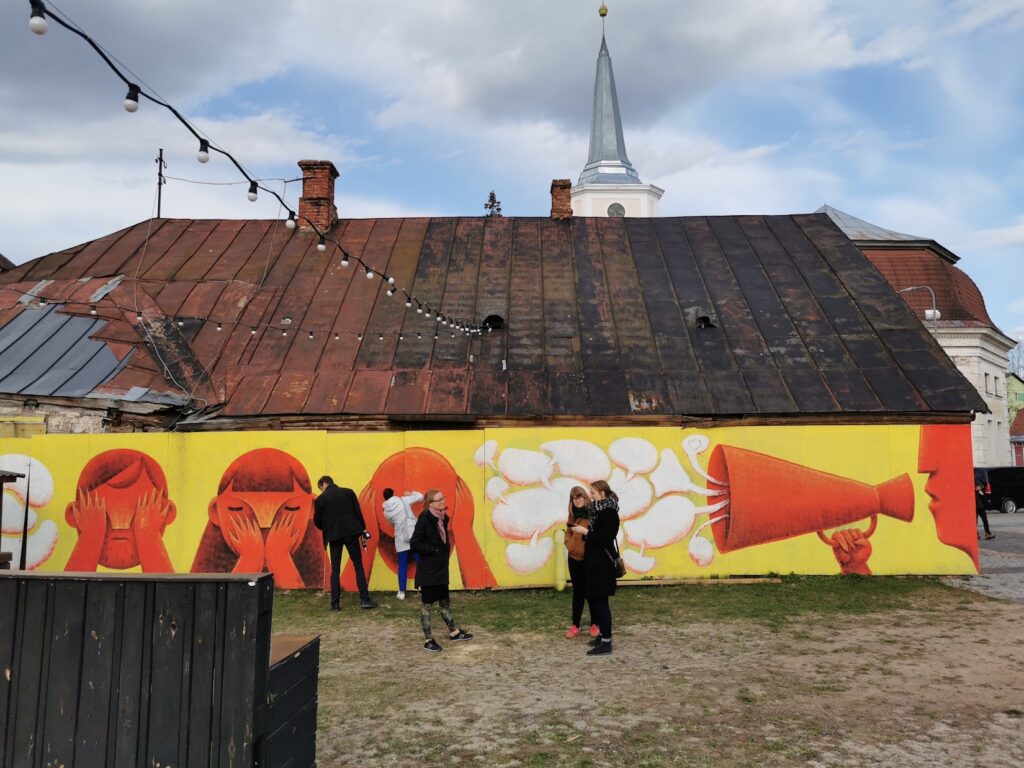Kaija-Luisa Kurik gives an overview of the results of a 30-months-long partnership project between the Estonian National Heritage Board and the Norwegian Directorate for Cultural Heritage, titled ‘Historic Town Centres Revitalised Through Heritage-Based Local Development’, and tries to decipher the increasingly close connections between heritage preservation, urban studies, and sustainable development.
In the context of climate crisis and declining city centres, one question that is increasingly asked is whether spatial heritage could acquire a more central role in the development of cities. The timeliness of the issue is evident from numerous partnership projects and international strategies that place the revitalisation of historic town centres at the forefront, focusing on the preservation and reuse of cultural heritage. Closer connections are being formed between urban studies, sustainability and heritage preservation also due to the spatial and place design practices that are common in urban studies.
In England, for instance, these trends are embodied in a programme known as Heritage Action Zones, led by Historic England.1 The purpose of the programme is to support the economic development of city centres in England by focusing namely on revitalising heritage environments. Having worked (from 2018 to 2022) as a manager of a supported partnership project that focused on Rochdale in Greater Manchester, I became keenly aware of the need to emphasise local distinctness when trying to support the development of smaller towns, but also of the enormity of the challenge that comes with revitalising historical town centres in a country that cannot be described in terms of a demographic crisis. England is still characterised by underutilised main streets, where the perspective of a rich heritage environment is limited. While working on that project, I also became familiar with the concept of heritage-based development—revitalisation of urban space through investing knowledge and money in heritage environments.
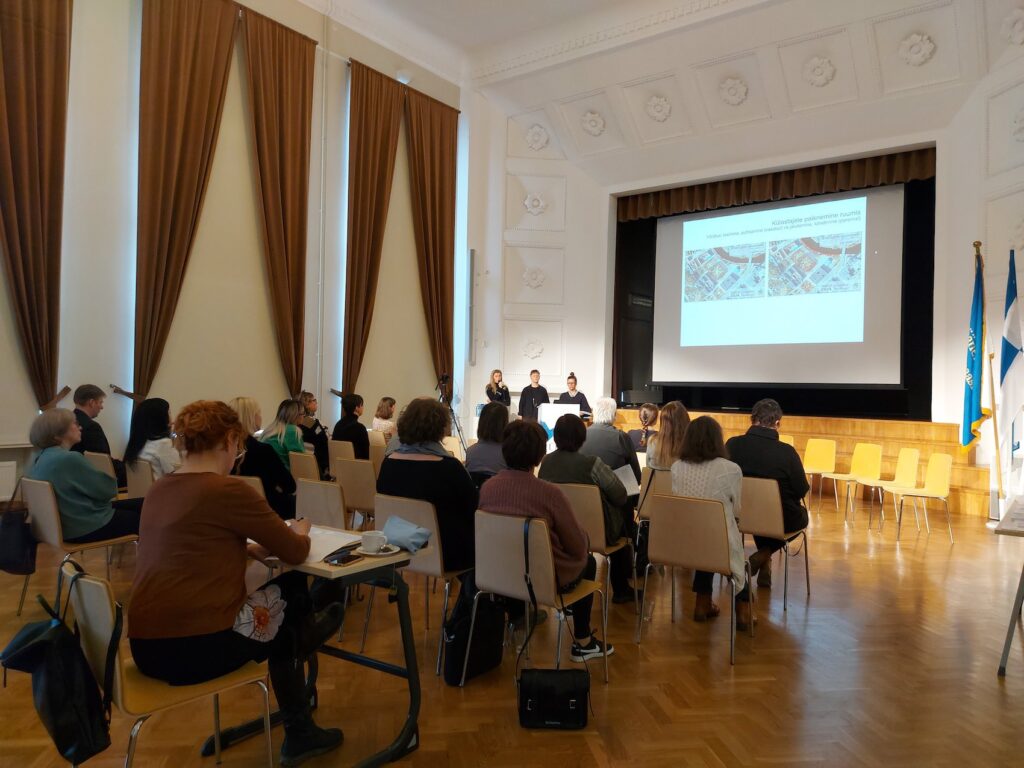
When I came to manage the Estonian-Norwegian partnership project that involved the centres of altogether nine small towns, I was greeted by similar problems, although each town had a particular twist. What English and Estonian historical small towns have in common are communities that are very much interested in the stories of their city centres, but also in their development, even if the latter is driven by nostalgia for times past. Our two and half years long Estonian-Norwegian partnership project titled ’Historic Town Centres Revitalised Through Heritage-Based Local Development’2 has made it clear that similar problems are present also in several Norwegian small towns. The highlighted challenges came from aging and diminishing populations, and the abundance of buildings that have lost their function. The historical towns that the project focused on have provided a number of useful insights and lessons on issues ranging from coping with seasonal change to possibilities of reusing historical buildings in the context of heritage protection restrictions. In what follows, I will give a project manager’s perspective on some of the main lessons of the project, which will conclude in 2023.
About the partnership project ‘Historic Town Centres Revitalised Through Heritage-Based Local Development’
Reasons why city centres are declining are many—the rise of car-centric lifestyles, relocation of commerce and daily functions to urban periphery, appreciation of low spatial diversity, and even online shopping. The phenomenon is certainly not specific to Estonia, but rather a broader consequence of Western neoliberal urbanisation processes. It is increasingly clear, however, that a more strategic approach is needed to keep our city centres functional.
Empty buildings constitute an unused potential for local development in terms of sustainability as well as well-functioning community. The purpose of the partnership project has been to increase the importance of heritage conservation areas as a part of local identity, and to find how maintaining and developing these areas could contribute to the cultural and economic development of the respective towns.
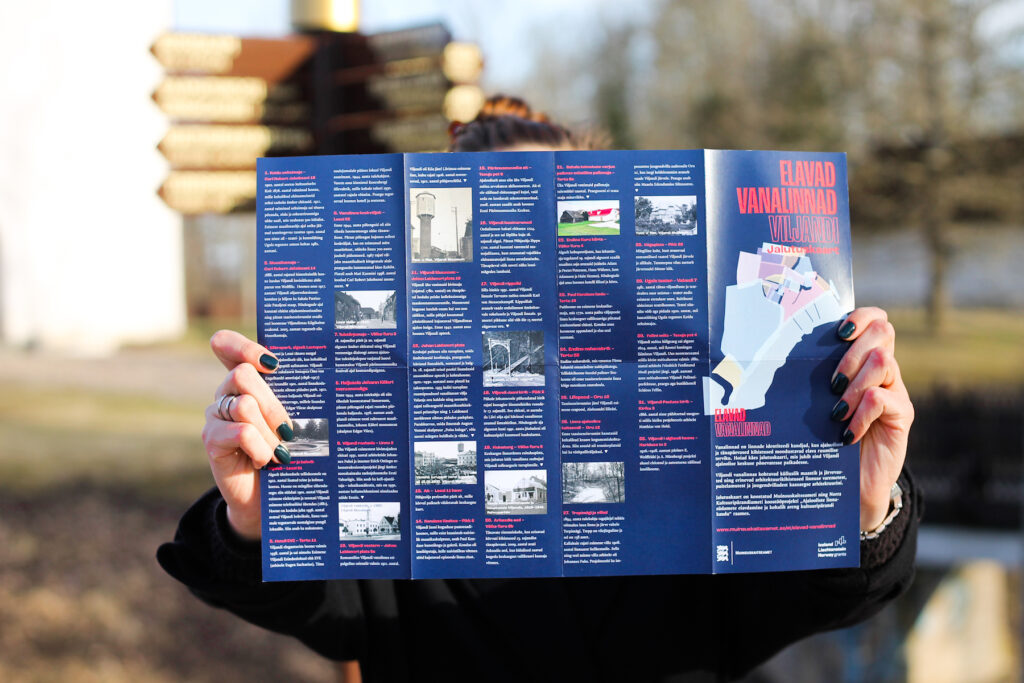
Estonia has 12 heritage conservation areas, 11 of which can be found in city centres.3 Except for the ones in larger cities, each of them is affected by population decline; the quality of life in the historical hearts of towns is shaped by seasonality and the fact that important functions are moving away from the centre, but also by valuable architectural environments and spatial continuity. Empty buildings constitute an unused potential for local development in terms of sustainability as well as well-functioning community.
The purpose of the partnership project has been to increase the importance of heritage conservation areas as a part of local identity, and to find how maintaining and developing these areas could contribute to the cultural and economic development of the respective towns. This purpose has been pursued with various soft activities—there have been public discussions, conferences, visits, as well as publications and workshops that were collectively titled ‘Vibrant Old Towns’. The activities of the project focused on heritage conservation areas and their residents in nine Estonian small towns—Paide, Rakvere, Võru, Valga, Lihula, Pärnu, Kuressaare, Haapsalu and Viljandi. One of the project outcomes is also the present special issue of Maja, where we discuss the functions of spatial heritage in understanding contemporary urban challenges.
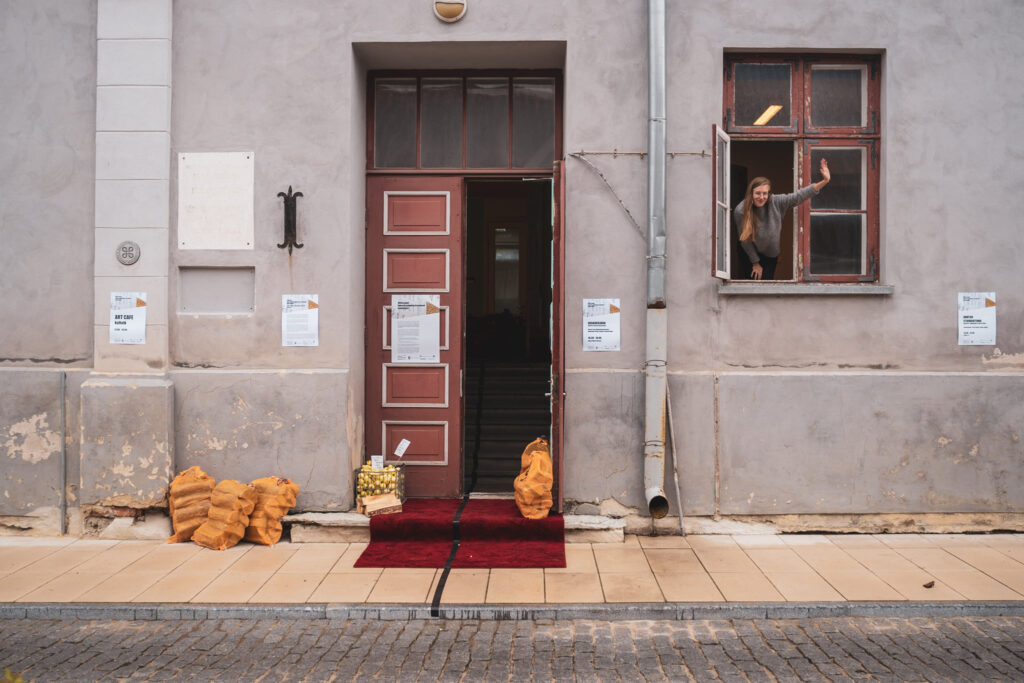
The activities of the project are framed within the goal of increasing awareness about the importance of heritage environments in creating greener and more socially sustainable urban spaces. For instance, a conference organised in the course of the project featured a panel discussion ‘The greenest building is the one that already exists?’, where we discussed the preservation of existing environments from the perspective of sustainable development with Eik Hermann, Kalle Vellevoog, Triin Talk and Indrek Allmann. Internationally, most common ground can be found on the topic of environment—by acknowledging that the footprint of a building does not consist in merely its energy consumption, but also its building and demolishing costs, we open up a new perspective on the comparison of historical and modern architecture. In practice, this knowledge is put to the test with a restoration grant from the same source, which has enabled to repurpose seven historical buildings in city centres.
Knowing that buildings last only as long as they are used helps to highlight the vast potential as well as the enormity of challenges. In addition to empty buildings, there is also the less visible phenomenon of underutilisation—cultural centres and public buildings that are rarely used, streetscapes that are affected by seasonality and where you can experience silence and emptiness for six to nine months in a year.
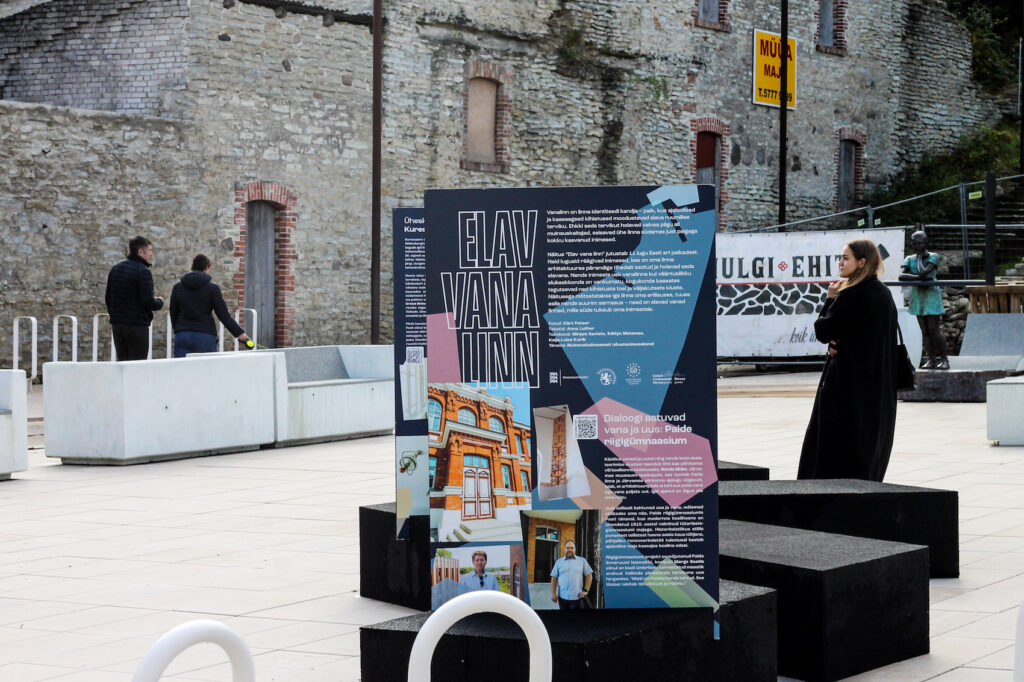
Is the attitude towards heritage changing?
The activities that took place in the course of the project have highlighted the need to give heritage experts a justified seat at the table when making important decisions on urban development. The field of heritage, both internationally and in Estonia, has long given up its fixation on bringing back times long past. Thus, heritage experts are needed in the discussions on sustainable urban development and communal continuity. Estonian heritage conservation, which has so far worked largely on a case-by-case basis, has not been sufficiently able to lay down broader strategic goals.
For the Estonian National Heritage Board, steering a partnership project that focuses on town centres has been a first-time experience that also contributes to a dynamic protection management process, in the course of which buildings in conservation areas are designated into different value categories. As a project manager, I felt that the Heritage Board has actually even further capacities and opportunities to give sense to historical urban spaces. Although heritage conservation continues to be regarded as a field that does not fit well with the term ‘development’ and brings to mind all kinds of restrictions, it is increasingly clear that the acknowledgement of existing culturally valuable spatial environments can be an engine of local development, and that conservationists can contribute to raising awareness. Here we need to highlight the concept of heritage-based development, which expresses the desire to change the attitudes through the idea that preserving historically diverse urban environments is possible only by using them, and that we should also be prepared to see them change together with our lifestyles, and that the city is not a museum, but a living organism. We must also understand that the spaces we create today are signs of our own time. It is seems kind of strange to imagine that in the future, the current and following decades will be commemorated by waning suburban shopping centres, which we will then be trying to repurpose—but at the same time, this is not altogether an utopian fantasy.

One of the most recent project events was the summer school ‘Vibrant Old Towns: From Energy Efficiency to Reuse’. In the course of the event, spatial enthusiasts and experts visited three towns participating in the project—Valga, Kuressaare and Rakvere. The summer school was wrapped up with a presentation by old towns advisor Kaarel Truu and built heritage advisor Merle Kinks from the Heritage Board, titled ‘What Use Do We Have for Heritage Conservation Areas?’. This straightforward way of putting the issue is very necessary—we need to remain open to the possibility that this particular format of protecting urban spaces is, in fact, useless. Yet, so far it still seems that on the community level, valuing historical urban spaces is deemed important and often taken pride in.
Partnership projects also present a good opportunity for creating an environment where spatial experts of small towns can engage in networking and learn from each other. The project made it clear that even towns that are demographically similar—e.g., Võru and Valga—can operate on quite different principles. Võru’s urban identity that is built on South Estonian peculiarities stands in strong contrast to the problems of Valga, where the challenges posed by population decline require more radical solutions.
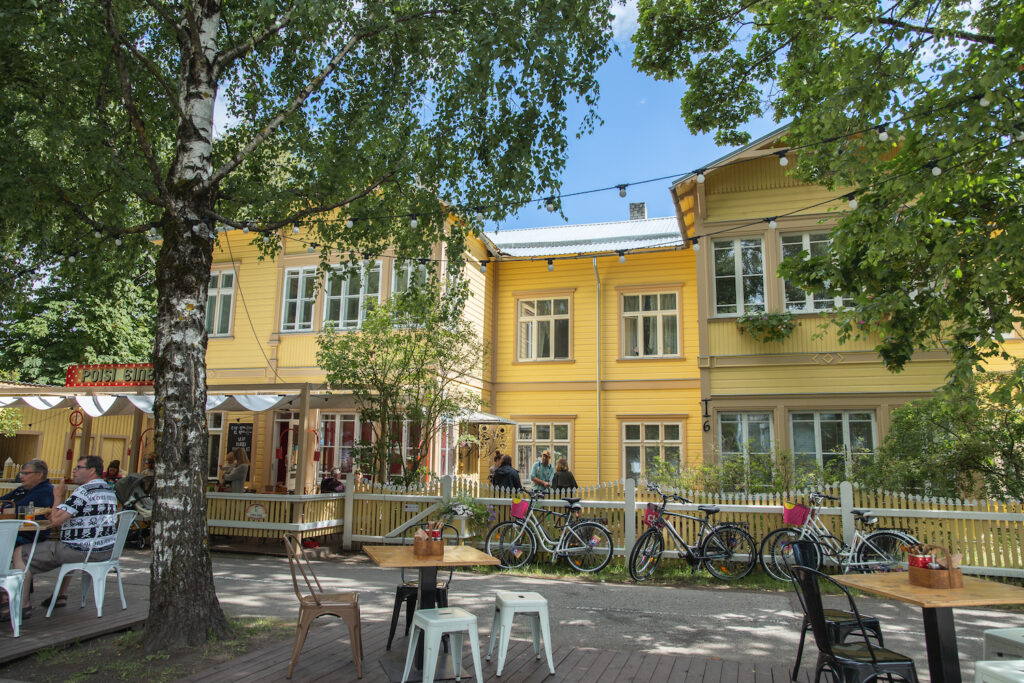
Place identity might appear as a soft category, but nevertheless guides actual spatial decisions, such as investments into public space or decisions to demolish abandoned buildings. We can certainly learn from how community activity is cherished in enlivening the town centre of Paide, the active cultural and art life in Viljandi, the determined investments into public space in Rakvere, the seasonally fluctuating activity in the urban space of Pärnu, Haapsalu and Kuressaare. On the backdrop of declining population and disused real estate, it is even somewhat surprising that our small towns (population 1000–17,000) are nevertheless able to offer spatially dense and culturally rich living environments. Still, there are flies in the ointment—news from small towns that dampen the optimism, such as those about the closing of Paide Theatre. Culture, empowered inhabitants and a diverse architectural environment could be precisely the winning combination that keeps the hearts of small towns alive.

What can we learn from Norwegian practices?
The current special issue features contributions from several Norwegian authors. The collaboration with the Norwegian Directorate of Cultural Heritage has certainly not been a one-way process of taking over their practices, but rather a mutual sharing of experiences. The Norwegian partners appreciated the local expertise and various approaches to urban heritage protection that emerged in trainings and other public events. Compared to the Estonian National Heritage Board, the Norwegian Directorate of Cultural Heritage thinks about heritage in a more strategic way. Cultural heritage preservation and urban development in Norway also have important roles for the local level and volunteers. The Norwegian Directorate of Cultural Heritage has the task of guiding the local development, but the decision-making powers lie with municipal governments and communities. In England, too, heritage conservation areas are a local rather than national matter. The common ground between the approaches of the three countries is certainly their growing interest in circular economy and the links between heritage and sustainability. I dare not take a clear stand on whether this would be the best solution given our case-by-case and state-run heritage protection, but there is certainly room for improvement in the kind of collaborations where heritage conservationists act as involvers and facilitators alongside the local level. For this reason, we need a more vision-centric approach, better overview of the effect of heritage on the economy, and larger support grants.

KAIJA-LUISA KURIK is the manager of the partnership project between the Estonian National Heritage Board and Norwegian Directorate for Cultural Heritage titled ‘Historic Town Centres Revitalised Through Heritage-Based Local Development’. In addition, she is an acting coordinator of the Urban Studies programme in the Estonian Academy of Arts, and also teaches urban studies and architecture students in the Manchester School of Architecture.
HEADER: Valga has become the favourite case study for those looking into the challenges related to decline, development and small towns. One of the oldest buildings in the town, at Kesk Street 19 by the central square, will find a new use with support from Norway. Photo by Vignir Freyr Helgason
PUBLISHED: Maja 109-110 (summer-autumn 2022) with main topic Built Heritage and Modern Times
1 Programme ‘Historic England Heritage Action Zones’, https://historicengland.org.uk/services-skills/heritage-action-zones/
2 Partnership project “Ajalooliste linnasüdametee elavdamine kultuuripärandi kaudu” https://www.muinsuskaitseamet.ee/et/ameti-tegevus/ajalooliste-linnasudamete-elavdamine-ja-kohalik-areng-kultuuriparandi-kaudu
3 Tallinn, Tartu, Valga, Võru, Pärnu, Kuressaare, Haapsalu, Lihula, Rakvere, Paide, Viljand heritage conservation areas

